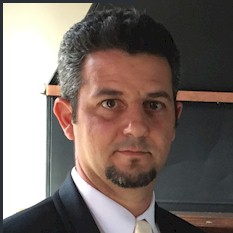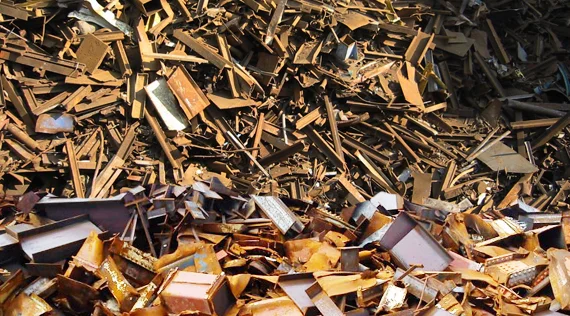San Francisco is surviving the global recycling crisis. But it’s not easy
Waste & Recycling | 2019-09-11 13:20:19
At Recology’s recycling center on a San Francisco pier, huge mounds of unsorted paper, plastic, aluminum and glass lie on warehouse floors. Workers operate tractors and haul in loads collected from blue bins across the city’s neighborhoods, businesses and construction sites.
Sfchronicle - At Recology’s recycling center on a San Francisco pier, huge mounds of unsorted paper, plastic, aluminum and glass lie on warehouse floors. Workers operate tractors and haul in loads collected from blue bins across the city’s neighborhoods, businesses and construction sites.
It’s about what you’d expect from a recycling facility that handles about 4,000 tons of recyclables a week — with one noticeable difference.
“Look at that — it’s all clean,” said Recology public relations manager Robert Reed. “You won’t smell any garbage here.”
The recycling center has prioritized cleanliness especially since China, which used to import huge quantities of used plastics, introduced stringent standards for recyclable material last year. The change stunned the industry, said Johnny Duong, the acting chief operating officer of California Waste Solutions, which handles a majority of San Jose and Oakland’s curbside recycling.
Previously, China would accept contamination rates of 7% or 8% for bales of recycled material — meaning 7% or 8% of containers by weight might have food or liquid waste or other materials mixed in. China is now asking for a contamination rate of 0.5% — “and I don’t know anybody who could meet that,” Reed said. Currently, bales from Recycle Central, Recology’s facility on Pier 96 near India Basin, have impurity levels ranging from 1.06 to 1.4%.
Some 90% of Recology’s plastics used to go to China. Now they go to Malaysia and Indonesia in addition to places in the Bay Area and across California. Other recyclers send plastics to Thailand and Vietnam as well. But some Southeast Asian countries, unprepared to handle the volume, have started rejecting plastic waste, too.
Whether the new markets are domestic or across the world, “the biggest change is that (they) are also demanding higher-quality bales of plastic,” Reed said.
Landfills and recycling centers across the country often host seagulls picking at the food waste and other garbage, but there are almost none at Recycle Central. Senior operations manager John Ferrari credits much of that to San Francisco’s zero-waste efforts and residents’ familiarity with the blue, green and black bins (for recycling, composting and landfill). The company contracts with San Francisco to collect the city’s waste.
The state of California, like San Francisco, wants to slash the use of plastics. Two bills, AB1080 and SB54, which set out goals of cutting packaging and plastic waste by 75% by 2030, face floor votes in the Senate and Assembly. Recology has been involved in lobbying for both bills, according to company Vice President Eric Potashner.
Buyers want bales composed of all of the same type of plastic, with no liquid or food waste, and the same goes for bales of glass, cardboard, paper or aluminum. (Recology sorts recycled materials into 14 different types, including seven different categories of plastics). The stench of garbage is a telltale sign for waste brokers, Ferrari said.
Industry profits have fallen. Recycling used to be a money-making business, said Kate O’Neill, an environmental science professor at UC Berkeley. Now, companies are lucky to break even. Some recyclers have shut down. RePlanet of Ontario (San Bernardino County), which accepted drop-off recyclables from residents, abruptly shut three San Francisco centers last month and laid off hundreds of workers across the state.
At Recology, the average value per ton for bales of mixed paper (which Recology usually sells to paper mills in the country and in Canada) dropped from $110 in 2017 to $20 in 2019. For mixed, “lower-grade” plastics (numbered 3 through 7) and clamshell plastic containers (like the ones that sandwiches, salads and fruit come in), there was no market at all in 2018, though things have gotten better this year. Recology still makes a profit on plastic bottles, according to Reed, but the numbers are lower. Recology declined to specify how much its revenues have changed.
Centers that can’t clean up enough to meet the stricter contamination standards struggle to make sales. The more that happens, the more plastic that ends up going to landfills or incinerators. Duong of California Waste Solutions said there’s “definitely more” plastic going to landfill as a result of China’s restrictions and the higher standards other markets are demanding. At Recology, most plastic bags go to the landfill because no one wants to buy them, Reed said.
Meeting contamination standards is an obstacle to many Bay Area cities’ zero-waste goals. To ease the burden on recyclers, San Jose is considering waiving fees for contractors that can’t meet required landfill diversion rates. Union City is charging homeowners an extra $2 each month through June for recycling services to help keep its recycling contractor Tri-Ced in business, according to a report from the Bay Area News Group.
San Francisco has fared better, O’Neill said. She attributes at least some of that to Recology’s investment — over $14 million in the last three years, according to Reed — in sorting technologies.
At Recycle Central, more than a dozen workers stand along an initial sorting belt, snatching up plastic bags, plastic film and most notably, many of the pouches lined with bubble wrap that companies like Amazon use for smaller packages. Those types of materials pose difficulties because they often get mistaken for paper by machines, so Recology has workers pick them out by hand. With China out of the picture there is essentially no market for plastic shipping pouches, especially since the stickers pasted on the outside are also hard to separate.
Optical sorting machines can recognize plastic and separate it from paper. By mid-September, Recology will have also installed four recycling robots to help further. One robot scans with a laser to detect plastic clamshell containers by their density and suctions them off of the conveyor belt, and it’s about 50% more efficient at picking up the clamshells than a human worker.
It’s still an imperfect process — plastic bags and flexible film-like plastics still end up slipping in with the paper, and the robot won’t pick up every clamshell on the belt. But more investment in the recycling industry, spurred by China’s moves, could lead to better waste management, O’Neill said.
But Reed thinks the responsibility shouldn’t rest solely on recycling centers to do a better job. Manufacturers need to make adjustments, too. Anything that spurs demand for recycled material could help, said Kara Pochiro, vice president of communications for the Association of Plastic Recyclers. She thinks that if manufacturers could commit to using recycled material in their products and then sign long-term contracts with recyclers, those centers might feel more comfortable making investments necessary to produce higher-quality bales of recycled material.
“China’s done a right thing by me,” Ferrari said. “Tightening (their standards) has forced everybody to clean up their act.”
Courtesy : https://www.sfchronicle.com
 By
By 